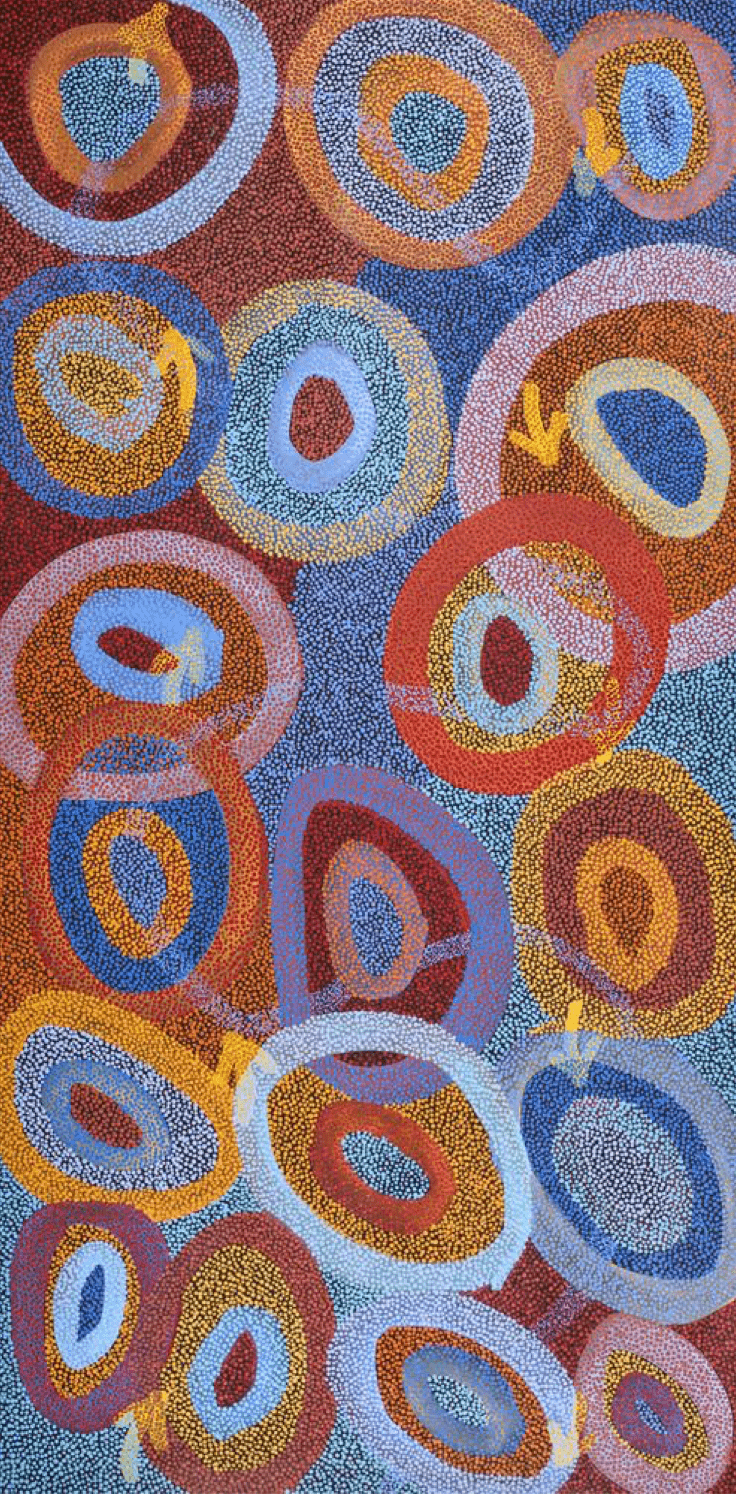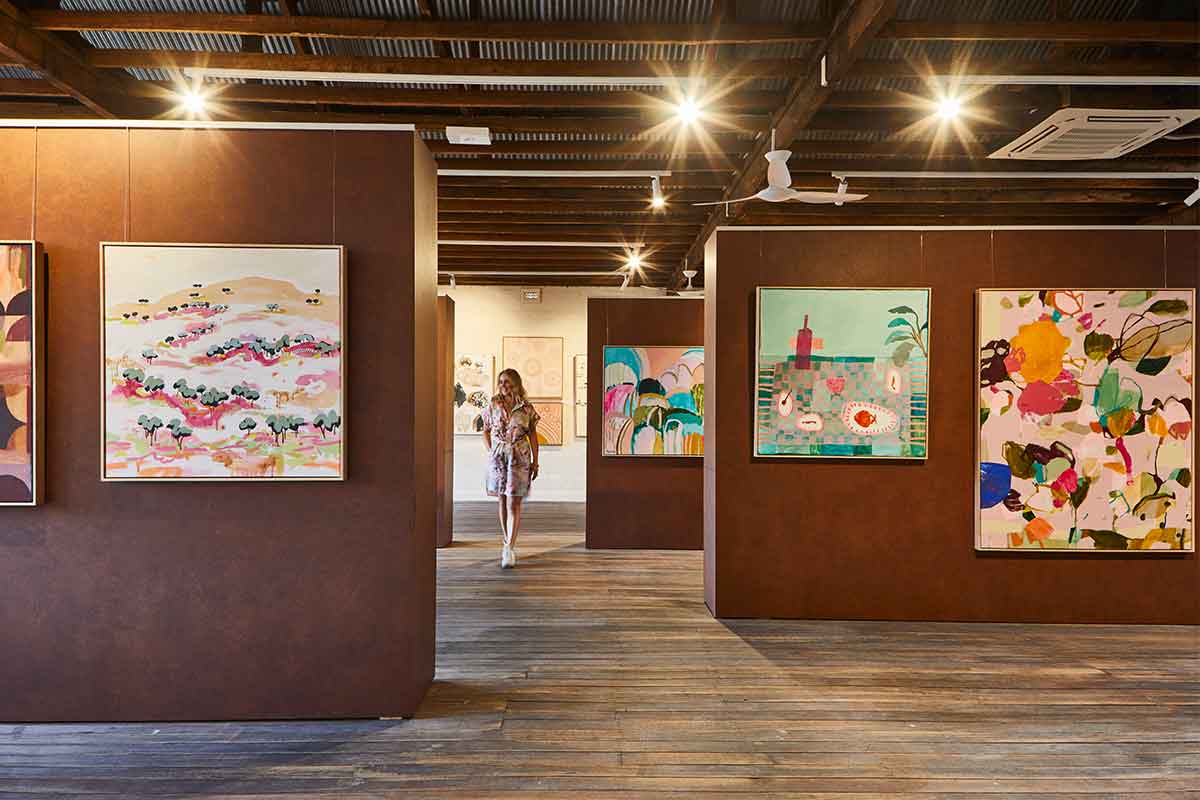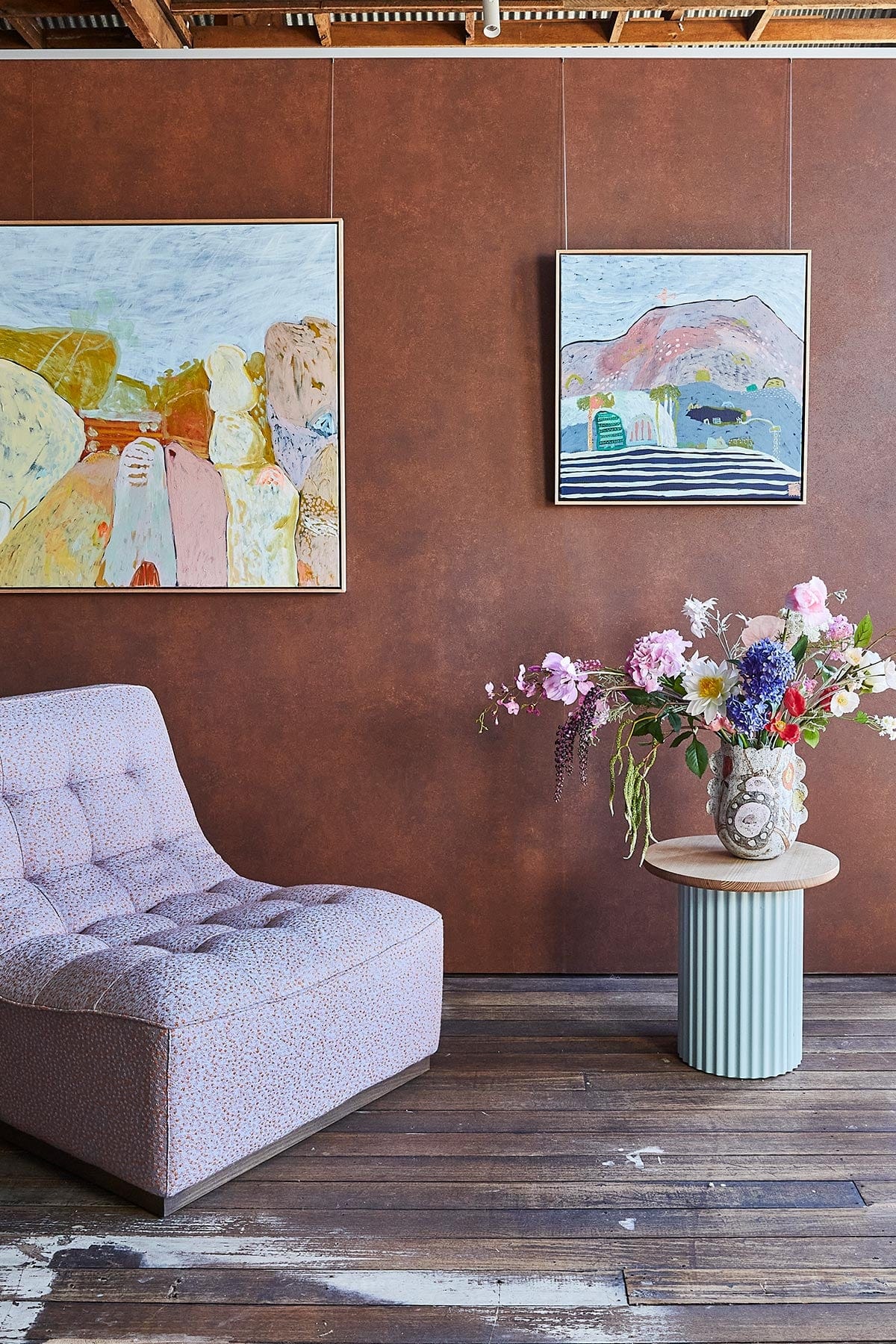
Yankirri Jukurrpa (Emu Dreaming) - Ngarlikirlangu
Details
Yankirri Jukurrpa (Emu Dreaming) - Ngarlikirlangu is an original artwork by artist - Pauline Nampijinpa Singleton, a member of the Warlukurlangu Artists Aboriginal Corporation.
Additional canvas around the edge of the painting allows for stretching.
Artwork measures - 152 x 76 cm
This original artwork is unframed and shipped rolled up to your door! We have very competitive framing options on our site - see tab below to get a free online quote.
A stamped certificate of authenticity is supplied by Warlukurlangu Artists Aboriginal Corporation with this artwork.
Warlukurlangu Artists is famous for its gloriously colourful acrylic paintings and limited edition prints. The Aboriginal art centre has a national and international profile and its art has been featured in hundreds of exhibitions and publications in Australia and around the world. Warlukurlangu means ‘belonging to fire’ in the local language, Warlpiri, and is named for a fire dreaming site west of Yuendumu.
Established in 1985 Warlukurlangu Artists Aboriginal Corporation is a not-for-profit organisation that is 100% Aboriginal-owned by its artists from the remote desert communities of Yuendumu and Nyirripi in Central Australia. Proceeds from the sale of all art go directly back to the artists and their community projects. Warlukurlangu Artists is supported by funding from the Australian Government through the Indigenous Visual Arts Industry Support.
Free shipping in Australia
___________________________________
Story:
This painting depicts a ‘yankirri Jukurrpa’ (emu [Dromaius novaehollandiae] Dreaming) from a place called Ngarlikurlangu,approximately 50kms north of Yuendumu. The ‘kirda’ (owners) of this Dreaming are Nangala/Nampijinpa women and Jangala/Jampijinpa men.
This Jukurrpa tells the story of a ‘yankirri’ (emu) and a ‘wardilyka’ (bush
turkey [Ardeotis australis]). ‘Yankirri’ lived at a soakage to the west called Warnirripanu (or Walangkamirirri), while ‘wardilyka’ lived at a soakage to the east called Parirri. The emu and bush turkey used to go around the country picking ‘yakajirri’ (bush raisins [Solanum centrale]) and mashing them into ‘kapurdu’ (fruit balls) to save in their nests for later. However, they were jealous of each other; the emu thought that the bush turkey was picking the best and juiciest ‘yakajirri’, and was leaving him with only the sour ‘yakajirri’.
The emu went to the bush turkey’s nest to the east while the bush turkey was out hunting and smashed up the ‘kapurdu’ that the bush turkey had saved there. When the bush turkey returned, he found his smashed ‘yakajirri’ balls and realized that the emu had destroyed them. He went to the west to confront the emu and when he found him, they got into a big fight. The bush turkey eventually flew away to the north, leaving behind the smashed ‘yakajirri’ balls. This practice of making ‘kapurdu’ (fruit balls) is a traditional Warlpiri method of storing ‘yakajirri’; in the old days, people used to dry the ‘yakajirri’, grind them up with a rock in a coolamon, mix them with water and form balls from them, and cover the ‘kapurdu’ with red ochre so they would keep.
Today at Ngarlikirlangu we can see round, red rocks which are the ‘kapurdu’ that the emu smashed up. There is also a dance for this ‘yankirri’ (emu) Jukurrpa that is performed during mens’ initiation ceremonies. A number of other Jukurrpa are also located at Ngarlikirlangu, including ‘wardilyka Jukurrpa’ (bush turkey Dreaming), ‘yardijiinypa Jukurrpa’ (meat ant Dreaming), and ‘pirntina Jukurrpa’
(woma or Ramsay’s python [Aspidites ramsayi] Dreaming). Lots of ‘yakajirri’ grow around the Ngarlikirlangu area today. In contemporary Warlpiri paintings, traditional iconography can be used to represent the Jukurrpa, associated sites, and other elements. ‘Yankirri’ are usually represented by arrow-like shapes depicting their ‘wirliya’ (footprints) as they walk around.
Shipping
SHARE THIS PRODUCT
You might also like...

LIFE IS BETTER WITH COLOUR
Trusted Brand Since 2012
- Specialist curator of emerging artisans, since 2012
- Over 70 Australian and international artists
- Exclusive collections
- Shop online or visit our Showroom & Gallery
- 14 day return policy*
- 24x7 support, including humans
- FREE 3D app to see art on your walls
- 5 star rating
- 100% Greenhouse Art Guarantee

Free Art Advisory
Lost in the search? Let our free art advisory cut through the noise and lead you to your next masterpiece—one that feels like home. Click on the button below to get started.

